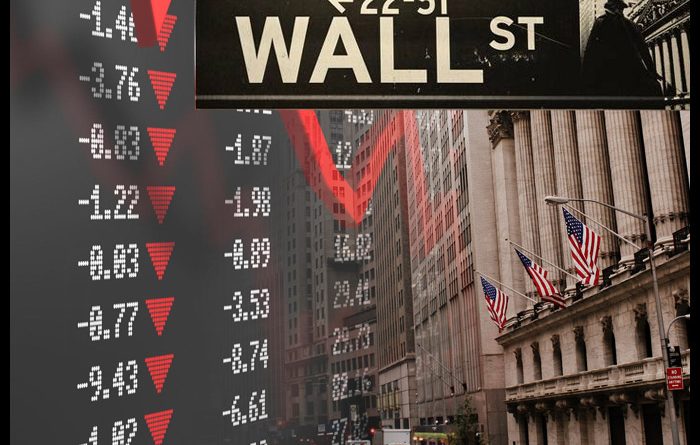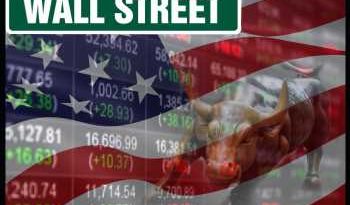U.S. Stocks See Further Downside After Early Pullback
After turning lower early in the session, stocks have seen some further downside over the course of the trading day on Friday. The major averages have slid more firmly into negative territory, with the Dow on pace to its extended its recent losing streak.
Currently, the major averages are off their worst levels of the day but still in the red. The Dow is down 143.40 points or 0.4 percent at 33,166.11, the Nasdaq is down 96.31 points or 0.8 percent at12,232.20 and the S&P 500 is down 24.92 points or 0.6 percent at 4,105.70.
The early downturn on Wall Street came following the release of a report from the University of Michigan showing U.S. consumer sentiment deteriorated by much more than anticipated in the month of May.
The report said the consumer sentiment index tumbled to 57.7 in May from 63.5 in April, while economists had expected the index to edge down to 63.0.
With the much bigger than expected decrease, the consumer sentiment index slumped to its lowest level since hitting 56.8 last November.
“While current incoming macroeconomic data show no sign of recession, consumers’ worries about the economy escalated in May alongside the proliferation of negative news about the economy, including the debt crisis standoff,” said Surveys of Consumers Director Joanne Hsu.
She added, “Throughout the current inflationary episode, consumers have shown resilience under strong labor markets, but their anticipation of a recession will lead them to pull back when signs of weakness emerge.”
Hsu also said year-ahead inflation expectations receded slightly to 4.5 percent in May after spiking to 4.6 percent in April.
Meanwhile, long-run inflation expectations rose to 3.2 percent in May from 3.0 percent in April, reaching their highest reading since 2011.
Worries about the debt ceiling crisis also continue to hang over the markets, with the postponement of a meeting President Joe Biden and top lawmakers adding to jitters about a potential default.
“The discussion between the U.S. president and Congress around the debt ceiling issue could increasingly become a pain point for the stock market as the potential date for a default approaches,” said DHF Capital CEO Bas Kooijman. “A U.S. default could have a tremendously negative impact on the global economy and on the financial system.”
“In this regard, some banks have started putting in place contingency plans to face a potential default,” he added. “As such, investors could be monitoring the developments around this issue every step of the way in the coming days.”
Sector News
Airline stocks have come under considerable selling pressure over the course of the session, with the NYSE Arca Airline Index falling by 1.5 percent.
Significant weakness has also emerged among banking stocks, as reflected by the 1.4 percent drop by the KBW Bank Index.
Computer hardware and retail stocks have also moved notably lower on the day, while most of the other major sectors are showing more modest moves.
Other Markets
In overseas trading, stock markets across the Asia-Pacific region turned in a mixed performance during trading on Friday. Japan’s Nikkei 225 Index advanced by 0.9 percent, while China’s Shanghai Composite Index slumped by 1.1 percent.
Meanwhile, the major European markets all moved to the upside on the day. While the U.K.’s FTSE 100 Index rose by 0.3 percent, the French CAC 40 Index and the German DAX Index both climbed by 0.5 percent.
In the bond market, treasuries are giving back ground after moving notably higher over the two previous sessions. Subsequently, the yield on the benchmark ten-year note, which moves opposite of its price, is up by 4.9 basis points at 3.446 percent.
Source: Read Full Article



